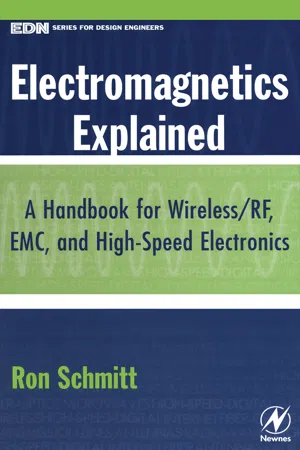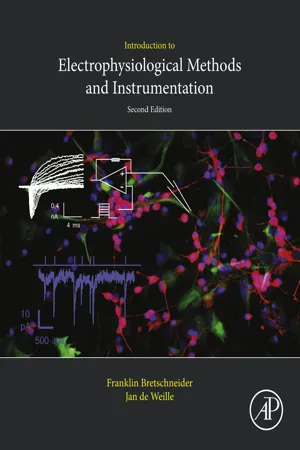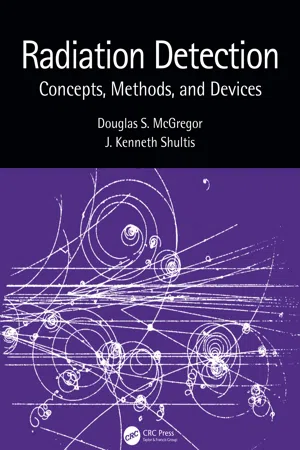Physics
Electric Potential Due to Dipole
The electric potential due to a dipole is the measure of the electric potential energy per unit charge at a specific point in space due to the presence of an electric dipole. It is given by the equation V = k * p * cos(θ) / r^2, where V is the electric potential, k is the Coulomb's constant, p is the magnitude of the dipole moment, θ is the angle between the dipole moment and the position vector, and r is the distance from the dipole.
Written by Perlego with AI-assistance
7 Key excerpts on "Electric Potential Due to Dipole"
Learn about this page
Index pages curate the most relevant extracts from our library of academic textbooks. They’ve been created using an in-house natural language model (NLM), each adding context and meaning to key research topics.
- eBook - ePub
- Jacob N. Israelachvili(Author)
- 2010(Publication Date)
- Academic Press(Publisher)
C :Figure 4.1 Ion-dipole interactions. The field of the ion (assumed positive) is E Q , while that of the dipole (acting on the ion) is E u . By definition, the direction of an electrostatic dipole is from B to C in panel (a) —that is., along the direction of the field emanating from the dipole, as shown in panels (b) and (c) , not the internal field.(4.3) where(4.4) where the approximate values are in the limit of —that is, at large separations compared to the dipole length.1 In the point dipole approximation limit, the interaction energy becomes(4.5) Note that since the electric field of the charge acting on the dipole is , we see that in general the energy of a permanent dipole u in a field E may be written as(4.6)Equation (4.5) gives the free energy for the interaction of a charge Q and a “‘point dipole” u (for which l = 0) in a medium. Thus, when a cation is near a dipolar molecule, maximum attraction (i.e., maximum negative energy) will occur when the dipole points away from the ion (θ = 0°), while if the dipole points toward the ion (θ = 180°) the interaction energy is positive and the force is repulsive. Figures 4.1 b and c show the field lines of a finite-sized dipole and a point dipole, respectively. Also shown in Figure 4.1 c is the direction of the force on a charge, which is seen not to point along r - eBook - ePub
Liquid Crystal Displays
Fundamental Physics and Technology
- Robert H. Chen(Author)
- 2011(Publication Date)
- Wiley(Publisher)
to provide the potential. That is, the uniform charge distribution on the surface of the sphere producing the potential φ is the “idealized potential” (i.e., that potential that can reconcile the difference between the effective field and the average field).The general definition of potential is the amount of work required by an electric field to push a point charge q that is subject to the force F of an oppositely charged point charge , in accord with Coulomb’s lawwhere the work is calculated by the line integral from point 1 to point 2 over the distancer1andr2, soand it can be seen that electric potential decreases inversely with distance (1/r ).Because and within the sphere, the electric potential is obtained by integrating over the volume of the sphere, Now, setting thenwhere the function is the negative electric potential owing to a uniform charge density over the volume of the sphere; therefore, it satisfies Poisson’s equation, andBecauseand and can be similarly expressed, due to the symmetry of a sphere relative to its center, that is,andthen because of the above Poisson equation relation , every term in the equation above is 1/3 of the whole, soAccordingly, the effect of the effective electric field inside the sphere on the molecules in terms of the electric field and charge polarization isEvery molecule’s electric dipole moment p then has a directly proportional relation with the effective electric field as follows,where α is the “average polarizability” of the molecules. If there are N - eBook - ePub
Electromagnetics Explained
A Handbook for Wireless/ RF, EMC, and High-Speed Electronics
- Ron Schmitt(Author)
- 2002(Publication Date)
- Newnes(Publisher)
Chapter 6 , you will learn more about the vector potential when we discuss quantum physics.MAGNETIC MATERIALS
Diamagnetism
In Chapter 2 , you learned that different materials behave differently in electric fields. You learned about conductors and dielectrics. Electric fields induce reactions in materials. In conductors, charges separate and nullify the field within the conductor. In dielectrics, atoms or molecules rotate or polarize to reduce the field. Magnetic fields also induce reactions in materials. However, since there are no magnet charges, there is no such thing as a “magnetic conductor.” All materials react to magnetic fields similarly to the way dielectrics react to electric fields. To be precise, magnetic materials usually interact with an external magnetic field via dipole rotations at the atomic level. For a simple explanation, you can think of an atom as a dense positive nucleus with light electrons orbiting the nucleus, an arrangement reminiscent of the planets orbiting the sun in the solar system. Another similar situation is that of a person swinging a ball at the end of a string. In each situation, the object is held in orbit by a force that points toward the orbit center. This type of force is called a centripetal force. The force is conveyed by electricity, gravity, or the string tension, respectively, for the three situations. Referring to Figure 3.17 and using the cross product right hand rule, you find that the force due to the external magnetic field points inward, adding to the centripetal force. The increase in speed increases the electron’s magnetic field, which is opposite to the external field. The net effect is that the orbiting electron tends to cancel part of the external field. Just as the free electron rotates in opposition to a magnetic field, the orbiting electron changes to oppose the magnetic field. This effect is called diamagnetism - Franklin Bretschneider, Jan R. de Weille(Authors)
- 2018(Publication Date)
- Academic Press(Publisher)
J.Figure 6.2 Iron filings showing magnetic field lines of a (hidden) bar magnet.The shape of the dipole field is best known from that of a bar magnet. In fact, the electric and magnetic dipole fields share a common mathematical form. In Fig. 6.2 , the magnetic field lines of a hidden bar magnet are made visible by the layer of iron filings.Multipole Fields and Current Source Density
The situation where there are many sources and sinks is a generalization of Eq. (6.1) .These current sources, Ik , located at, contribute to the potential atr k→r →by summing:V(=r →)∑ kρI k4 π||r →−r k→(6.2)It is easy to calculate the field potential distribution in space with Eq. (6.2) if the distribution of current sources and sinks is known. This has been done as an exercise in Fig. 6.3A and B for one dimension. However, the problem is usually the inverse: given the field potential distribution where are the current sources and sinks located? That is because these indicate, for example, active brain regions and sources of EEG potentials (see Chapter 9- eBook - ePub
Electrical Engineering
Fundamentals
- Viktor Hacker, Christof Sumereder(Authors)
- 2020(Publication Date)
- De Gruyter Oldenbourg(Publisher)
4 The stationary electric fieldTo separate charges energy is necessary; this energy is stored in the space between the separated charges. The resulting energy space is referred to as electric field. In this field, forces are exerted onto charge carriers. Electrically charged objects are surrounded by an electric field, which represents the state of a certain space (e.g. between electrically charged objects). Said state is characterised by the electric charges that are affected by a force as soon as they enter its space. The electric field strength E measures the force that affects a charged object in an electric field.The electric field strength at a certain point within the field is defined as the force exerted on a positive point unit charges or C. The mechanical force F as well as the electric field strength E are vector quantities:Q += 1 AE ⃗=E =F ⃗Q +V mField types
The pattern of the electric field lines strongly depends on the geometric arrangement of charges. Field lines always enter or exit the charge carrier vertically.Radial symmetric fieldFigure 4.1: Field line path of a charged sphere.Homogeneous fieldFigure 4.2: Field line path between two charged plates.Displacement workThe force F depends on the field strength E and the quantity of electric charge Q.Energy levelIf a charge is moved using work against the field force, it subsequently has a higher energy level.Electric potentialTo obtain information on the possible (work) potential of an electric field, the potential must relate to the charge (potential per unit charge). The reference potential can be determined arbitrarily. Usually, the negative electrode is defined as zero potential. A surface with same electric potential at every point is called an equipotential surface.VoltageWhen energy is gained or lost, a charge is transferred from an electric potential 1 to another potential 2. The potential difference is called voltage V (corresponds to the striving for balance of separated charges). Voltage is also referred to as potential difference. - eBook - ePub
Radiation Detection
Concepts, Methods, and Devices
- Douglas McGregor, J. Kenneth Shultis(Authors)
- 2020(Publication Date)
- CRC Press(Publisher)
In the limit of decreasing angles between field lines, Δ ω → dω, Δ l → dl, Δ r → dr, and θ 1 = θ 2 = θ. From Fig. 8.5, the relationship between the differential distance traveled dl and the differential change in distance between the charges dr is cos θ d l = d r. (8.12) Substitution of Eq. (8.12) into Eq. (8.10) then yields the work done on the point charge Q ′ as it moves from some point r 1 to r 2, W = ∫ r 1 r 2 F d r = ∫ r 1 r 2 1 4 π ϵ o Q Q ′ r 2 d r = Q Q ′ 4 π ϵ o (1 r 1 − 1 r 2). (8.13) This result shows that the path taken from r 1 to r 2 is immaterial, but instead only the change in radial distance from Q determines the work done. In other words, it is only the starting and ending locations that determine the total work performed on the charge moving in the electric field. 2 Figure 8.5. Depiction of charge Q ′ moving through the electric field of charge Q. The potential energy of a particle with charge Q located a distance r away from another particle of charge Q ′ is represented by U = 1 4 π ϵ o Q Q ′ r. (8.14) Suppose that the particle with charge Q ′ is surrounded by n particles with charge Q i at distance r i from the particle with charge Q ′. The total potential energy exerted on the particle with charge Q ′ from the collective electric fields of the surrounding particles is U = Q ′ 4 π ϵ o (Q 1 r 1 + Q 2 r 2 + Q 3 r 3 +... + Q n r n) = Q ′ 4 π ϵ o ∑ i = 1 n Q i r i. (8.15) The potential energy of an individual charged particle is useful, and is important for understanding signal formation within an electronic radiation detector. However, it is more common to use the general term potential, which is defined as the potential energy per unit charge, V = U Q ′ = 1 4 π ϵ o ∑ i = 1 n Q i r i, (8.16) and is expressed in units of volts (or joules per coulomb) - eBook - ePub
- Adrian Waygood(Author)
- 2018(Publication Date)
- Routledge(Publisher)
potential’ .The absolute potential at any point along a line of electric flux is defined in terms of the work done in moving a negative charge (in Figure 5.4 , a single electron but, in practice, a negative charge equal to one coulomb) from infinity to that particular point (point B ).Unfortunately, this is not a very practical definition for potential – after all, ‘infinity’ is hardly ‘accessible’!Figure 5.4So, instead, we choose an accessible , but arbitary, point of reference – such as point A in Figure 5.4 – and then find the work done in transporting the charge from that point to point B . In other words, we determine the potential at point B with respect to point A .Or, to put it another way, it allows us to determine the potential difference between points A and B .The potential difference between two points in an electric field is defined in terms of the work done in transporting electric charge between those two points.The term ‘voltage ’ is synonymous with ‘potential difference’ (but not potential) – i.e. they both mean exactly the same thing! The symbol for potential difference or voltage is E , U or V






